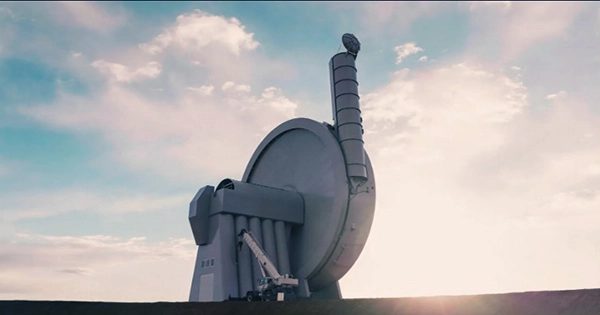To determine if launching objects into the air with a slingshot could be a practical substitute for chemically powered rocket launches, NASA and a number of other partners have teamed up with the US-based startup SpinLaunch.
In the desert of New Mexico last week, SpinLaunch carried out its eleventh successful launch using its suborbital accelerator. In their most recent launch, which you can watch here, the start-up sent several payloads into space, including those belonging to NASA, Airbus, Cornell University, and satellite delivery business Outpost.
Their main objective was to test whether the delicate scientific equipment would survive the Suborbital Accelerator’s high G-force environment.
In essence, this technology spins the object in a vertical centrifuge 12 meters (39 feet) tall at an average speed of 8,046 kilometers per hour (5,000 miles per hour). When the object reaches its maximum speed, it is fired out of the chimney of the accelerator and thrown into the air.
A Data Acquisition Unit (DAQ) featuring a variety of sensors, including two accelerometers, a gyroscope, a magnetometer, and pressure, temperature, and humidity sensors, was part of NASA’s payload. The DAQ was recovered after landing, and scientists are now sorting through the information it gathered.
The mission was a success because every piece of equipment survived the commotion of a spinning sling-shot launch.
According to Jonathan Yaney, founder, and CEO of SpinLaunch, “Flight Test 10 is a critical inflection point for SpinLaunch, as we’ve exposed the Suborbital Accelerator system externally for our clients, strategic partners, and research groups.”
Yaney continued, “The data and insights acquired from flight tests will be invaluable for both SpinLaunch and our clients who look to us to provide them with affordable, high-cadence, sustainable access to space as we advance the development of the Orbital Launch system.
Although orbital insertion of a payload is the system’s ultimate objective, it has not yet been accomplished. The business withheld details regarding the height of this most recent test launch, but earlier launches have seen items soar as high as 7,620 meters (25,000 feet).
Using an astronomical slingshot in the desert to send items into orbit might seem like a bit of an absurd goal. However, SpinLaunch’s innovative launch technique has a distinct benefit because it uses less fuel, which lowers the cost of each launch.
If all goes as planned, the startup wants to start providing orbital launches to customers by 2025.















